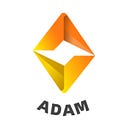The Position and Role of ADAM — the Infrastructure Service Facility in the Web3 Ecology
With the improvement of infrastructure facilities in the blockchain industry, the Web3.0 ecology is increasingly moving towards decentralization. Plenty of companies, organizations, projects and communities are now taking blockchain development to the next level, and Web3.0 is closer to the mainstream than ever before.
Blockchain Infrastructure Facilities
Since the team of blockchain developers created Ethereum, creating the first fully programmable blockchain, new blockchains are being developed all the time. It is because of these prominent developer blockchains (also know as “infrastructure blockchains”) that a thriving ecosystem of Dapps (decentralized applications) has emerged.
When it comes to blockchain infrastructure facilities, many people may first think of public chains, distributed storage or protocol layers including physical devices, software and current blockchain technology stack, etc. Perhaps we can have a clearer understanding according to CoinDesk’s “Digital Asset Classification Standard” (DACS), which to a certain extent introduces the uniformity to the current relatively confusing classification of digital assets in the blockchain industry. According to DACS, industry digital assets are broadly divided into six segments: computing, cryptocurrency, DeFi, culture and entertainment, smart contract platforms, and digitization.
Although each of these six areas has its own blockchain infrastructure services, computing and smart contract platform dominate. This article will focus on ADAM, the representative blockchain infrastructure service project in the computing area. Why is ADAM the representative project? Let’s take a look at the breakdown of CoinDesk’s Digital Asset Taxonomy in the computing area.
DACS Computing
According to DACS’ documentation, computing includes protocols focused on decentralization and intermediaries services such as removing computing, cloud storage, databases and networks. In addition, DACS divides the computing domain into five segments, all of which provide important blockchain infrastructure services.
IoT — The IoT segment is focused on developing the “Internet of Things” and Web3 by incorporating blockchain networks into the real world. basically, this type of protocol helps interoperability between IoT networks and blockchains.
Oracle Protocol — Oracle protocols focus on collecting, organizing, and transmitting data by supporting “on-chain to on-chain” and “off-chain to on-chain” data in real time. Typically, oracles use their network’s native token to pay transaction costs and governance rights.
Privacy Computing — This part of the agreement is all about creating a free, decentralized, security-as-a-service marketplace for computing power.
Shared Networks — Distributed cloud computing open networks allow participants to provide energy and computing resources to buyers at different costs.
Shared Storage — Shared storage protocols all exist to revolutionize the traditional centralized storage server by distributing storage responsibilities across an open source network of miners/stakeholders and building a system of economic incentives.
The first Web 3.0-based data encryption computing network
ADAM entered the blockchain industry through the oracle protocol, and its first wide-area node network is an on-chain data sharing network that realizes distributed storage of data sources. It not only has the function of bulk data encryption transmission and can connect the world and blockchain system, but also can realize the unimpeded flow of data information in all major public chain ecologies. To ensure the security of on-chain data transmission, ADAM also takes full advantage of privacy computing and applies this technology to the whole data encryption computing network.
At present, ADAM is actively expanding its business scope, and its product function construction focuses on six segments covering on-chain data retrieval, on-chain data analysis platform construction, Oracle function optimization, data monitoring plug-in development, data visualization display and on-chain integrated marketing. These functions are precisely the important infrastructure services that fit well with the development of industry trends.
Blockchain infrastructure service facilities include many different parts. For example, blockchains, Dapps, smart contract platforms, node providers, API providers and hardware components. Proper use of blockchain infrastructure services can make it easier for developers to build core strengths in the crypto field. If you want to use blockchain infrastructure services to bring your business or project into Web3.0, then the data encryption computing network ADAM will be a very good choice.
